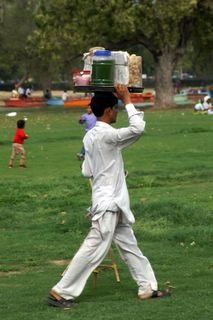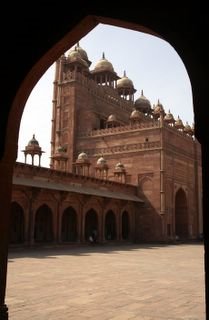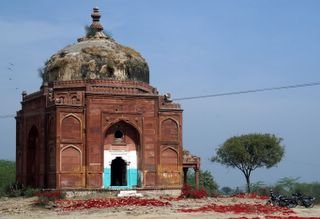
I took a Friday off and flew to Delhi to visit some of the most famous sights in India. Fortunately the low-cost airline market is booming right now in India, which allowed me to get a very reasonably priced ticket with Kingfisher airlines. Kingfisher was simply amazing, the quality of service was at a level I haven't seen for at least in a decade in the US and Europe. They had brand new planes, excellent and plentiful food, and generally outstanding flight attendants. The airports are still goverment owned, and they are operated deplorably. Kingfisher somehow managed to subvert the authorities and place their own people at security control, baggage handling and they may have even replaced the cleaning staff in the waiting area adjacent to their gate, making you almost forget that you're at an Indian airport.
A cab took me around to see the Delhi sights, then it took me to Agra, the location of Taj Mahal, a town located about 200 kms southwest of Delhi. Then we went on to Jaipur, about 200 kms east of Agra. We completed the triangle by going back to Delhi, and then I flew right back to Bangalore.
The schedule was very tightly packed, and as I found out, driving 200 kms in India can take 4-5 hours. Some major roads would be considered dirt roads anywhere else, and you can't drive faster than 30 km/h because of the immense potholes. On the better roads you can theoretically reach speeds of 90 km/h, but you have to decelerate every other minute to avoid random bikers, large domestic animals, small wild animals, wandering children, fallen trees and various other obstacles. In addition, you can only drive during daylight hours, because as soon as night descends you will find two types of vehicles on the road: ones with no lights whatsoever, and ones with amazingly powerful high beams. So half the time you're blinded by oncoming traffic, and the other half you just can't see a thing in the darkness.
This picture shows the Qutb Minar, the largest minaret of its time (72.5 m tall, completed in the 14th century).
























